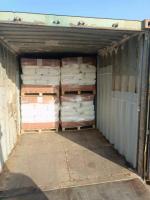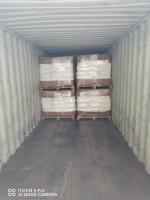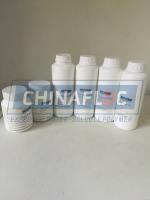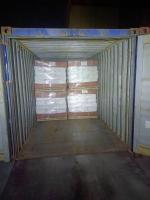Our Products
Polyacrylamide / Anionic polyacrylamide Dryfloc 970 can be replaced by Chinafloc A1316

Application of Anionic Polyacrylamide (Dryfloc 970)
Introduction
Dryfloc 970 is a high-performance anionic polyacrylamide (APAM) supplied by SNF as part of its Dryfloc™ product line. It is engineered as a granular, water-soluble polymer with a relatively low hydrolysis degree and a high molecular weight. Dryfloc 970 is widely applied in industries that require solid–liquid separation, slurry handling, and water recovery, particularly in the mining sector. The product functions primarily as a flocculant, binding fine negatively charged particles into larger, faster-settling flocs that are easier to remove from liquid streams.
The versatility of Dryfloc 970 makes it valuable across mining, mineral processing, wastewater treatment, paper manufacturing, construction, and environmental applications. Below is an in-depth review of its main applications and advantages.
1. Mining and Mineral Processing
The primary application of Dryfloc 970 is in mining and mineral processing, where it is used for paste thickening, tailings storage, and slurry rheology control.
a. Tailings Thickening and Storage
Mining operations generate vast amounts of tailings, which are fine waste particles suspended in water. These suspensions are difficult to settle naturally and require chemical aids. Dryfloc 970 flocculates fine particles, creating dense underflow in thickeners and allowing for more stable tailings deposition. The benefits include:
-
Higher tailings density, reducing the volume of disposal sites.
-
Increased water recovery for reuse in the process plant.
-
Lower environmental footprint due to more stable tailings impoundments.
b. Paste Thickening Technology
In modern mining, paste thickeners are used to generate thickened tailings for disposal. Dryfloc 970 plays a critical role in ensuring proper floc formation, reducing yield stress of the slurry, and maintaining pumpability. This not only enhances water recovery but also supports safer and more sustainable tailings management strategies.
c. Water Recycling in Mining Circuits
Process water is a limited resource in mining. Dryfloc 970 helps clarify process water so it can be recycled into grinding, flotation, and washing circuits. Cleaner recycled water improves flotation performance and reduces the consumption of fresh water.
d. Ore Types Benefiting from Dryfloc 970
The product is particularly useful in the processing of bauxite, alumina, phosphate, coal, iron ore, and copper tailings, where ultrafines and clays make solid–liquid separation challenging.
2. Industrial and Municipal Wastewater Treatment
Beyond mining, Dryfloc 970 is used in wastewater treatment plants to accelerate the separation of suspended solids.
-
Municipal Effluents: It aids in clarifying wastewater and conditioning biological sludge before mechanical dewatering.
-
Industrial Effluents: Sectors such as steel, food processing, chemicals, and textiles often discharge effluents with high solids content. Dryfloc 970 enhances settling, improves effluent quality, and helps meet regulatory discharge standards.
-
Sludge Dewatering: When used before centrifuges, belt filter presses, or screw presses, it improves cake dryness and reduces sludge disposal costs.
The anionic charge is especially effective in systems with positively charged inorganic coagulants such as alum or ferric salts, making it a good flocculant aid.
3. Papermaking Industry
In papermaking, Dryfloc 970 contributes both to process efficiency and wastewater management.
-
Retention Aid: It promotes retention of fine fibers and fillers such as clay, titanium dioxide, or calcium carbonate, minimizing raw material loss.
-
Drainage Aid: Enhances water removal from the wet web on the paper machine, improving runnability and reducing energy use in drying.
-
Effluent Clarification: Papermills discharge wastewater with fibers and suspended solids; Dryfloc 970 clarifies this effluent, allowing water recycling and reducing pollution.
4. Construction, Tunneling, and Drilling
Dryfloc 970 has value in construction and geotechnical projects involving slurries and spoil suspensions.
-
Tunneling and Diaphragm Wall Construction: It clarifies bentonite slurries used in trench stability by removing fines and improving slurry recycling.
-
Drilling Operations: It enhances the settling of drilled cuttings, improving mud properties and borehole stability.
-
Construction Runoff Management: Applied to stormwater and runoff ponds to remove suspended sediments before discharge, ensuring compliance with environmental regulations.
5. Environmental and Agricultural Applications
Dryfloc 970 also plays a role in environmental protection and soil management.
-
Erosion Control: Applied to soils or irrigation ditches, the polymer binds soil particles together, reducing erosion and turbidity in runoff water.
-
Surface Water Clarification: Used in lakes, reservoirs, or rivers affected by turbidity, it helps remove suspended clays, improving water clarity and restoring ecosystem balance.
-
Stormwater Treatment: Sediment basins dosed with Dryfloc 970 settle particles quickly, minimizing turbidity levels before water is released downstream.
Advantages of Dryfloc 970
-
High Molecular Weight – Allows for effective particle bridging and floc formation, especially in dilute suspensions.
-
Low Hydrolysis Degree – Ensures performance in a wide range of water chemistries without destabilizing floc structure.
-
Efficiency at Low Dosages – Requires smaller amounts compared to conventional polymers, reducing chemical consumption.
-
Improved Rheology – Lowers the yield stress of thickened slurries, improving pumpability in paste applications.
-
Water Recovery – Enhances the volume of reusable water in mining and wastewater plants.
-
Operational Savings – Reduces energy, transport, and disposal costs by minimizing sludge volume.
-
Environmental Compatibility – Lower dosage and reduced waste generation help meet sustainability goals.
Practical Considerations
-
Preparation: Being a dry powder, Dryfloc 970 must be properly hydrated in solution before application. Inadequate dissolution may reduce performance.
-
Dosage Optimization: Optimal results depend on jar tests and site-specific adjustments. Overdosing can cause floc breakage or restabilization.
-
Combination with Coagulants: Works well when paired with coagulants for enhanced performance in wastewater treatment.
-
Handling: As with all polyacrylamides, solutions can be slippery; safe handling procedures must be followed.
Conclusion
The main application of anionic polyacrylamide Dryfloc 970 is in mining and mineral processing, particularly in paste thickening, tailings management, and process water clarification. By forming strong flocs, it enhances solid–liquid separation, reduces water consumption, and supports sustainable tailings storage practices.
Beyond mining, Dryfloc 970 extends its value to municipal and industrial wastewater treatment, papermaking, construction, tunneling, drilling, stormwater management, and environmental remediation. Its combination of high molecular weight, low hydrolysis, and efficiency at low dosages makes it an indispensable tool for industries seeking cost-effective and environmentally responsible solutions for solid–liquid separation.





